THE WARBURG INSTITUTE
The Warburg Renaissance
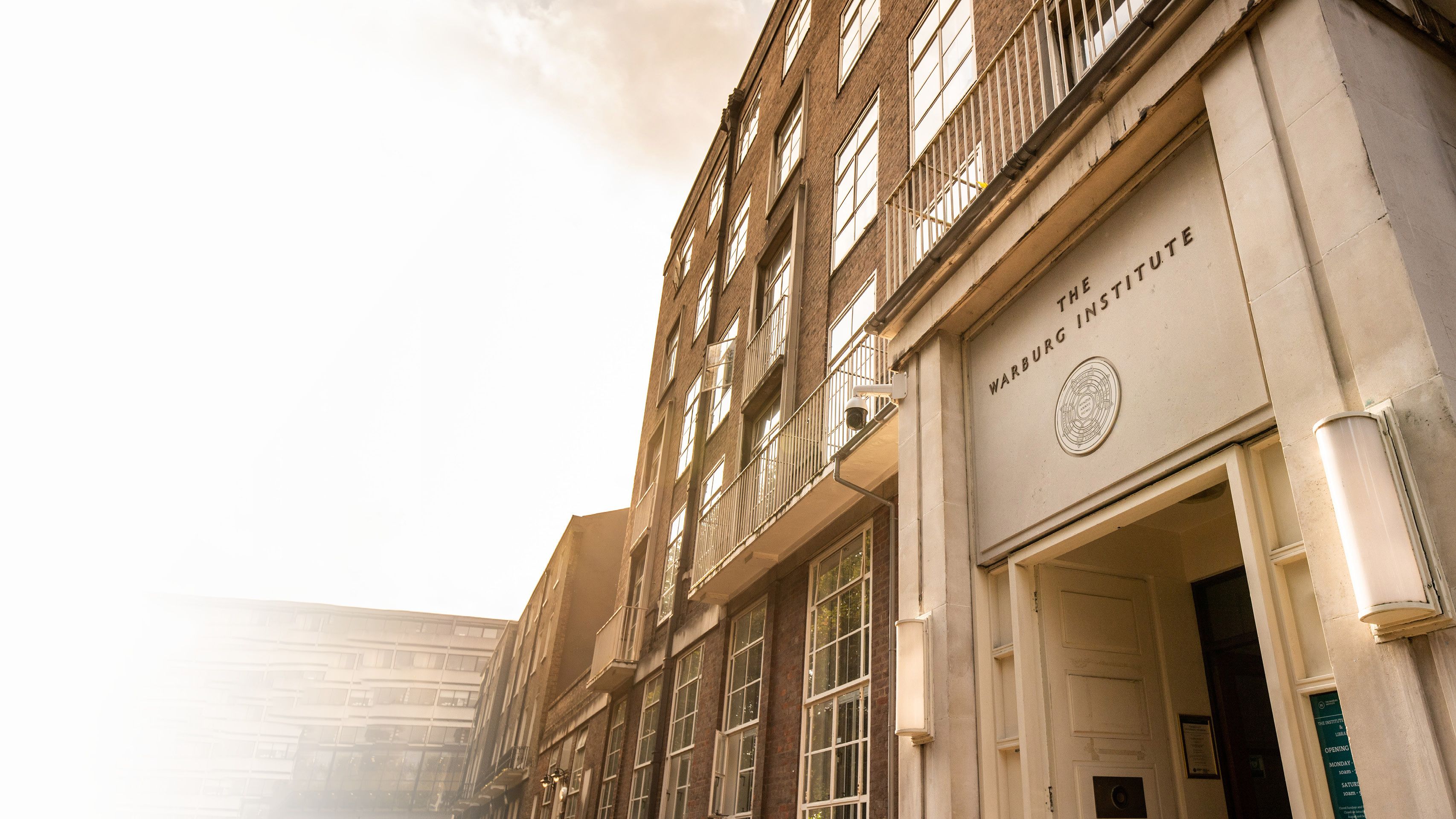
THE WARBURG INSTITUTE
The Warburg Renaissance

In the year since the Warburg Renaissance building programme officially broke ground, much progress has been made on the redevelopment of the Warburg Institute, with conclusion of the project anticipated in 2024.
Refurbishment progress
The end of phase one, in December 2022, saw the new third and fourth floors ready for Institute use, with new library spaces fully open and additional stacks in the basement. The second and first floors were also vacated ready for refurbishment in phase two.
The construction of the new courtyard structure is advancing rapidly. The installation of pilings in the courtyard to support the new extension is complete and the first columns, which will form part of the new space’s architecture, have now appeared.
Work continues apace and we look forward to the completion of the building works and the opportunity to fill these new spaces with enthusiastic students, world-class academics and exciting new initiatives.
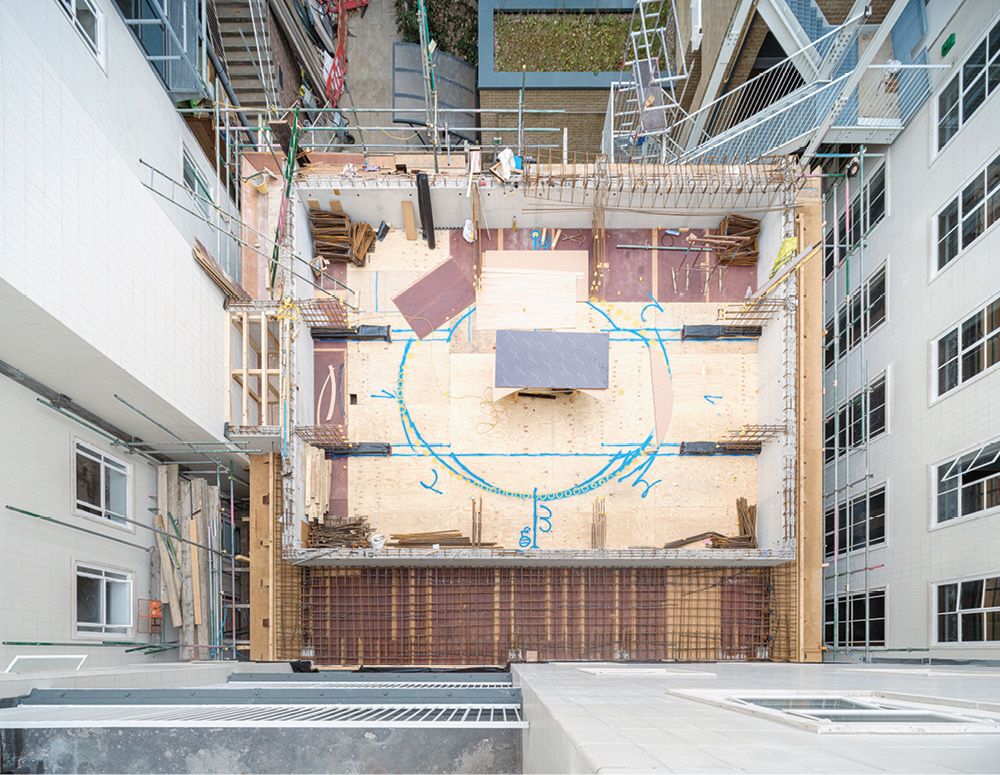
Photo of construction progress showing concrete frame, ellipse setting-out.
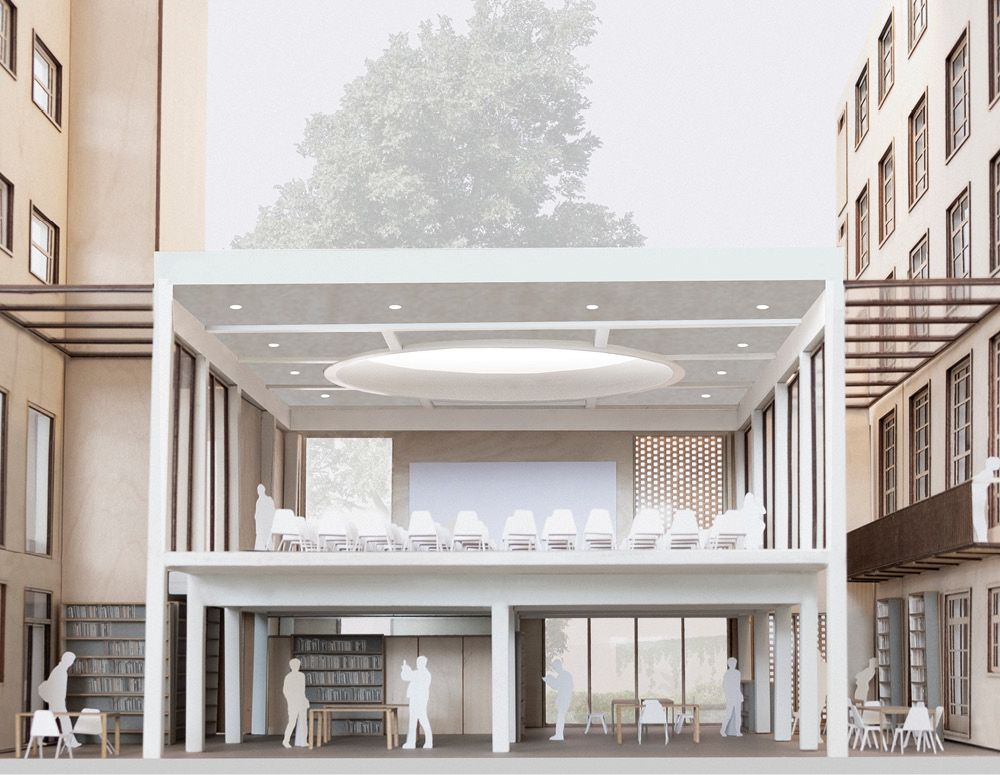
Artist rendering of cross-section view showing new courtyard.
Gombrich family piano
As well as the exciting renovation work, the Warburg Renaissance also gave us an opportunity to review some of our most treasured items to identify which are in most urgent need of repair before they take up their new homes in the Warburg Institute building. One such item is the Gombrich family’s Grotrian-Steinweg grand piano, which was kindly donated to the Institute by the family of Sir Ernst Gombrich, Warburg Institute Director from 1959–1976.
Friends of the Warburg, as well as family and friends of the late Sir Ernst, generously donated towards the much-needed restoration of this historic instrument. We all very much look forward to hearing the piano playing again at the Warburg.

Photo of construction progress showing concrete frame, ellipse setting-out.
Photo of construction progress showing concrete frame, ellipse setting-out.

Artist rendering of cross-section view showing new courtyard.
Artist rendering of cross-section view showing new courtyard.
“Thank you to all those who generously supported this work. We look forward to welcoming you back to the building in 2024 for a celebration of all we have achieved together. ”

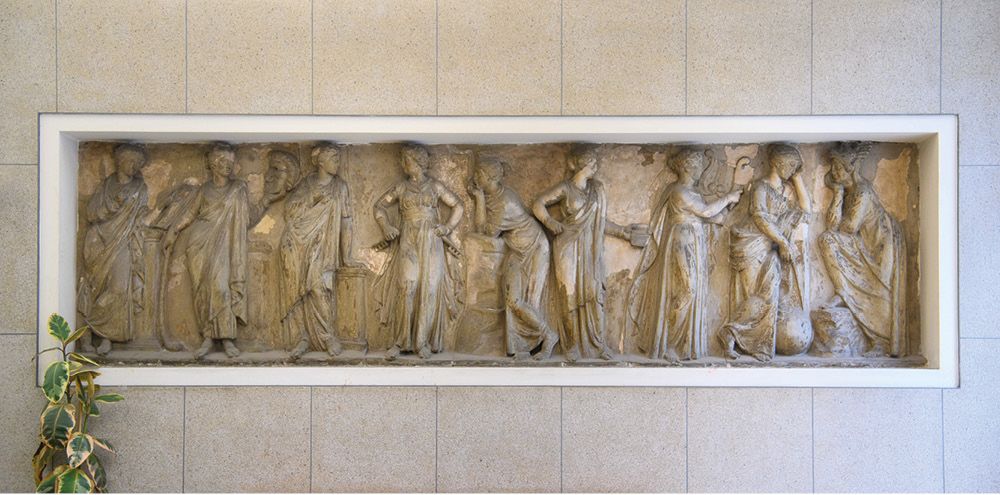
Frieze of nine Muses
Frieze of nine Muses
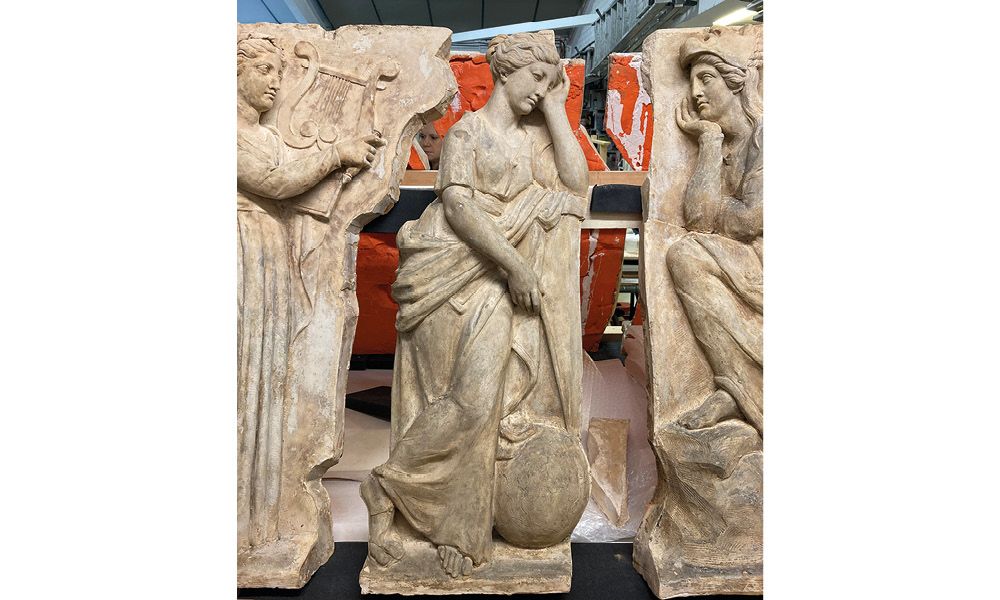
Restored section of the frieze. Photo credit: Haworth Tompkins.
Restored section of the frieze. Photo credit: Haworth Tompkins.
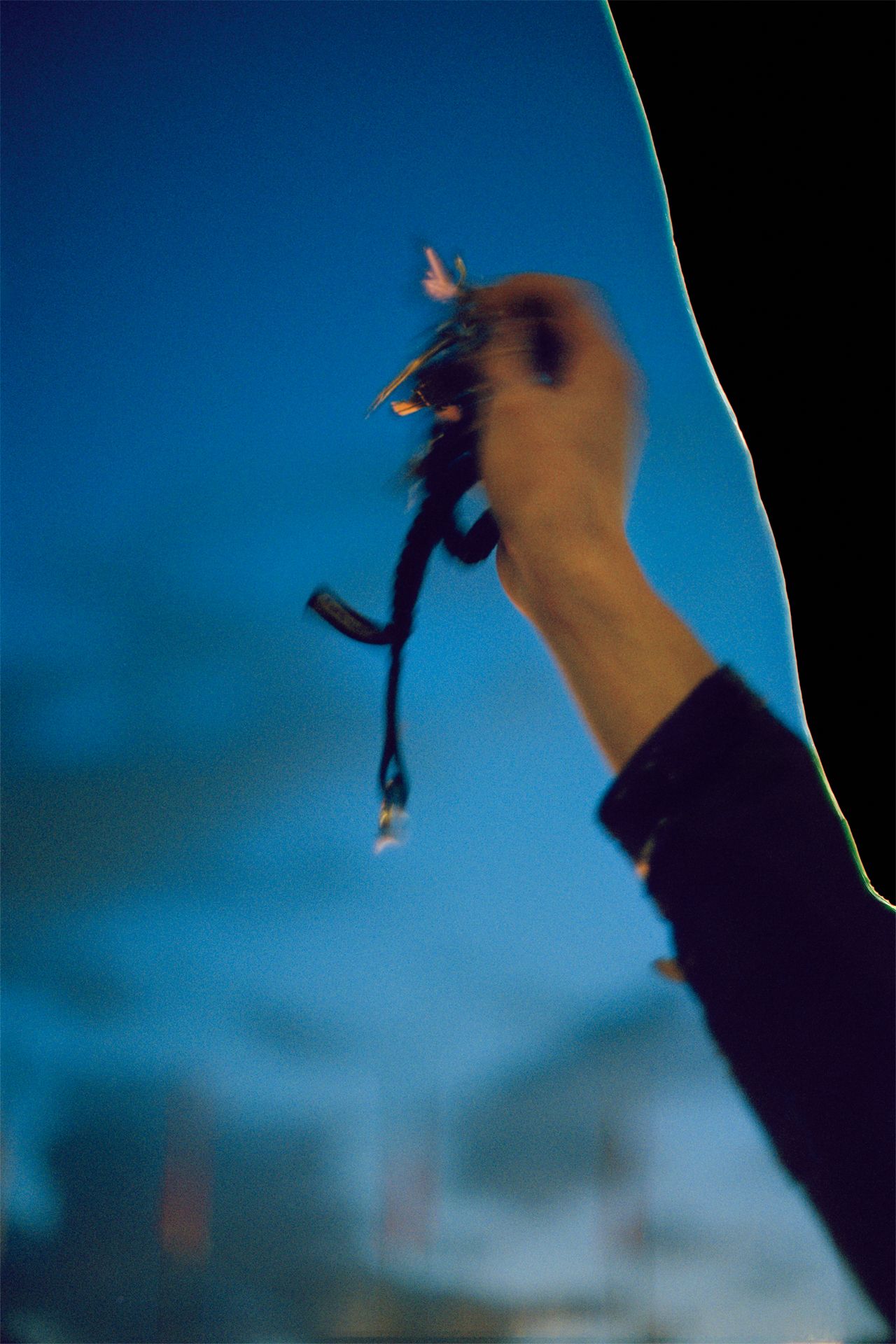
Tereza's imagery work at the Warburg Institute.
Tereza's imagery work at the Warburg Institute.
Nine Muses
Another exciting restoration project taking place at the Warburg, thanks to our donors, is that of the nine Muses, set into a frieze which has greeted students, academics and visitors to the institute since the building opened in 1958. The frieze is a copy of part of a second century AD Roman sarcophagus in the collection of the Louvre, Paris, which features in Aby Warburg’s Bilderatlas Mnemosyne.

Frieze of nine Muses

Restored section of the frieze. Photo credit: Haworth Tompkins.
Fascinatingly, this piece pre-dates the Warburg Institute at Gordon Square, having originally been set into the external wall of No 1 Gordon Square which was demolished in 1957 to make way for the Warburg Institute. The Warburg is grateful to donors who have ensured that the frieze can be lovingly restored before it takes up its new home in the Institute.
People and programmes
As we look to the future, we are focussing on the people and programmes who will bring this new space to life. One initiative already in place, thanks to the generous support from a number of donors, is the Warburg Institute Artist-in-Residence programme. We are pleased to have welcomed Tereza Červeňová to the Institute as an Artist-in-Residence as part of this programme.
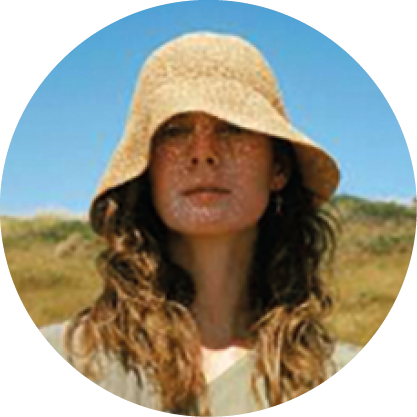
Tereza Červeňová, Artist-in-Residence
Tereza Červeňová, Artist-in-Residence
Tereza’s unique approach to photography and photomontage continues to capture the life of the Warburg including the process of the Warburg Renaissance, an important moment in history for the Institute.

Tereza's imagery work at the Warburg Institute.
Support from Volunteers
The Warburg is grateful to all those who have kindly given a gift of time to support the work of the Institute. The support and guidance provided by our key volunteers is always invaluable, but at a time of great change for the Institute the contributions made by our volunteers are more crucial than ever.
In particular, we would like to thank Daniel Peltz OBE (Chair of the Warburg Renaissance Steering Group), Chris Rossbach (Chair of the Warburg Charitable Trust) and all those who give their time to support these strategically vital groups.


To find out more about the Warburg Renaissance or how you can support the people and programmes who will bring these new spaces to life, please visit the Warburg website, or email: development@london.ac.uk
